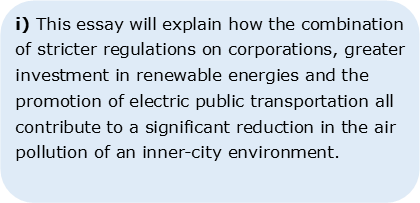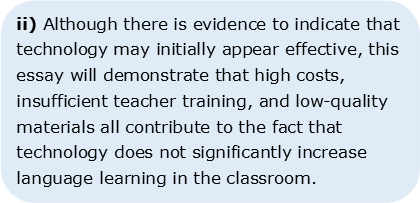Why are concluding thesis restatements important?

This is the first of three chapters about Thesis Restatements. To complete this reader, read each chapter carefully and then unlock and complete our materials to check your understanding.
– Review the key elements of a concluding paragraph
– Compare thesis statements with thesis restatements
– Identify a thesis restatements purpose and what makes one effective in an academic essay
Before you begin reading...
-
video and audio texts
-
knowledge checks and quizzes
-
skills practices, tasks and assignments
Chapter 1

While it’s never easy writing an essay conclusion, focussing on the individual elements of that section one by one (such as the summary of ideas and the research gaps) can significantly help a writer piece together an effective paragraph. In this short reader, we pay careful attention to the thesis restatement, which is often the first element of a concluding paragraph. We compare thesis statements with their restated versions in Chapter 1 to identify purpose, and in Chapter 2 provide four helpful tips for writing successful restatements. Finally, in Chapter 3, a number of example restatements are offered, providing students with useful academic phrases and structures.
What is a thesis statement?
A thesis statement is a one-sentence explanation of an essay’s purpose and its key arguments that’s usually found at the end of an introductory paragraph:


Thesis statements are an integral part of an essay. They allow the writer to communicate to the reader the following five aspects in a clear and concise way:
- the assignment/research question
- how the question is being approached
- a claim about the research question
- an outline of the essay structure
- the writer’s stance
Why should a thesis be restated?
As with any essay paragraph, there are multiple elements that should be included in a conclusion if a writer wishes to follow a proven formula. Such a formula may be particularly important for new or non-native writers who many not have the language skills to sufficiently communicate their ideas. One of the key elements is the thesis restatement, but why bother restating the thesis in the conclusion?
To improve coherence and cohesion in an essay, composition tutors will often highlight how critical it is to remind the reader of the key aspects of an argument. Three of the four key aspects are the thesis statement, the topic-sentence main ideas and the key supporting details. The thesis restatement, which is usually (but not always) placed at the very start of the concluding paragraph, is the final aspect, aiming to concisely and specifically bring the reader back to the overall purpose and focus of your essay. A writer’s argument should ideally be repeated across these four elements to maintain a theme throughout the essay and to keep the reader on track. A reader that becomes confused about your argument is unlikely to be convinced by your line of reasoning.

What makes for an effective thesis restatement?
A thesis restatement should be a paraphrase of the original statement, using different words (such as synonyms) or word orders and grammar to express the same ideas. The tense and aspect of these two corresponding statements should also be different to reflect the stages of the essay, with the original statement commonly found in the present simple and the restatement in present perfect:


An effective thesis restatement, however, should not only paraphrase the original as in the previous examples. In addition to using different words and grammar, a good thesis restatement should also demonstrate a deeper understanding of the topic:


Much like a thesis statement, the common elements of a thesis restatement are:
- task language
- topic
- key arguments
- stance
For guidance about how to form these elements effectively and how to write thesis restatements with confidence, continue studying with Chapter 2. To check your understanding of Chapter 1 first, consider unlocking, downloading and completing our Chapter 1 Worksheet from the menu below.
To reference this reader:
Academic Marker (2022) Thesis Restatements. Available at: https://academicmarker.com/essay-writing/concluding-paragraphs/thesis-restatements/ (Accessed: Date Month Year).
Downloadables
Once you’ve completed all three chapters in this short reader about Thesis Restatements, you might then wish to download our Chapter Worksheets to check your progress or print for your students. These professional PDF worksheets can be easily accessed for only a few Academic Marks.
Chapter 1 explores the topic: Why are concluding thesis restatements important? Our Chapter 1 Worksheet (containing guidance, activities and answer keys) can be accessed here at the click of a button.
Chapter 2 explores the topic: How can I restate a thesis statement effectively? Our Chapter 2 Worksheet (containing guidance, activities and answer keys) can be accessed here at the click of a button.
Chapter 3 explores the topic: Can I see example academic thesis restatements? Our Chapter 3 Worksheet (containing guidance, activities and answer keys) can be accessed here at the click of a button.
To save yourself 2 Marks, click on the button below to gain unlimited access to all of our Thesis Restatements Chapter Worksheets. This All-in-1 Pack includes every chapter, activity and answer key related to this topic in one handy and professional PDF.
Collect Academic Marks
-
100 Marks for joining
-
25 Marks for daily e-learning
-
100-200 for feedback/testimonials
-
100-500 for referring your colleages/friends